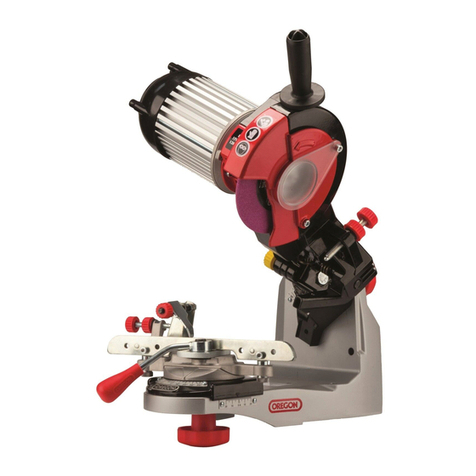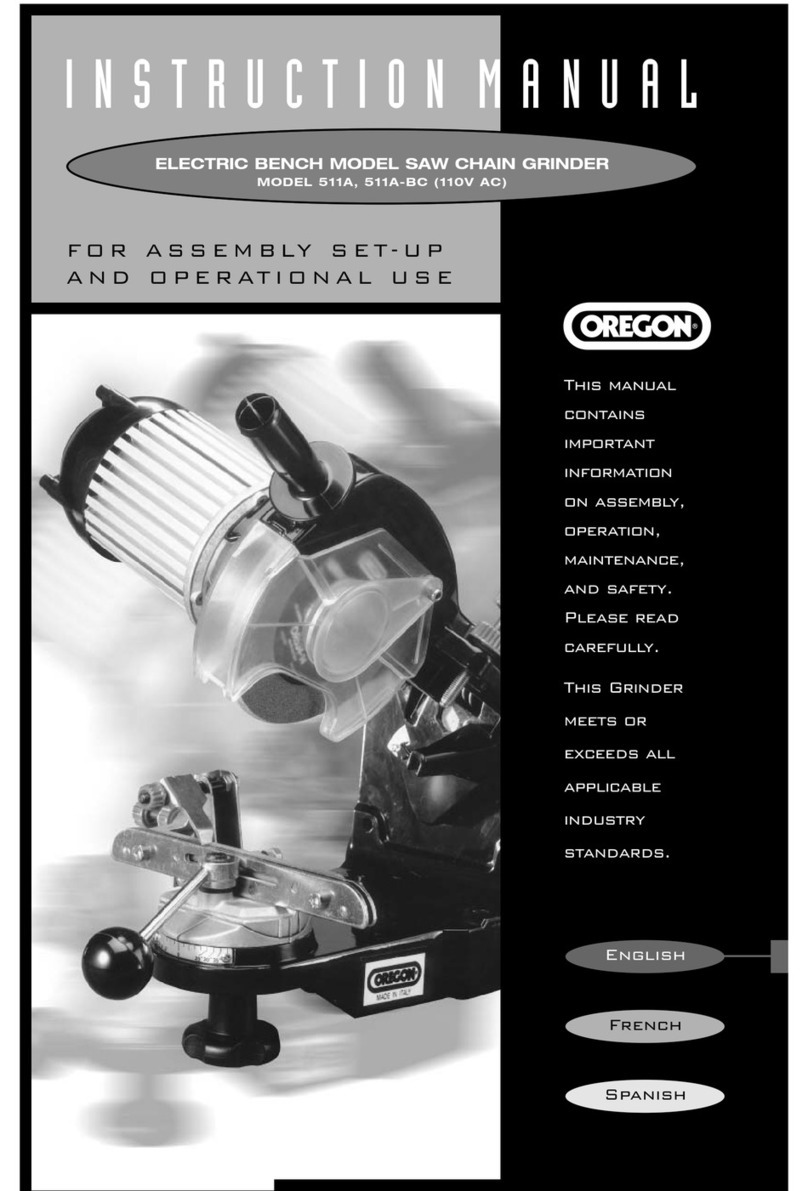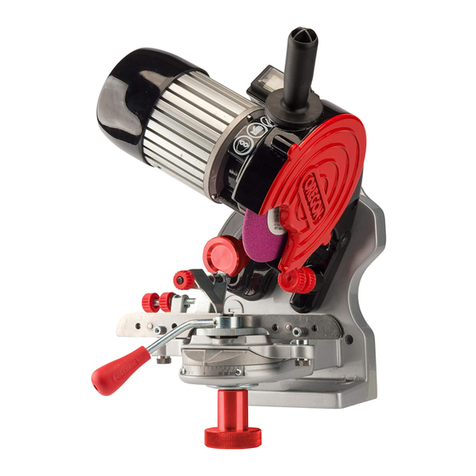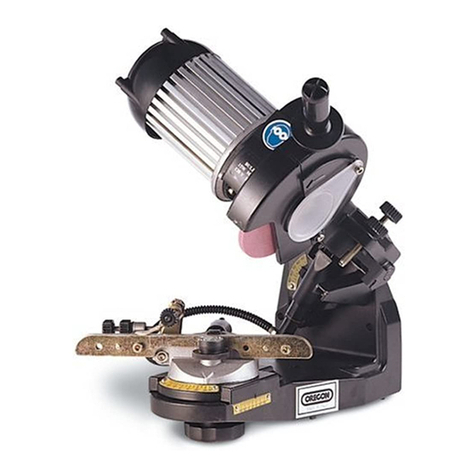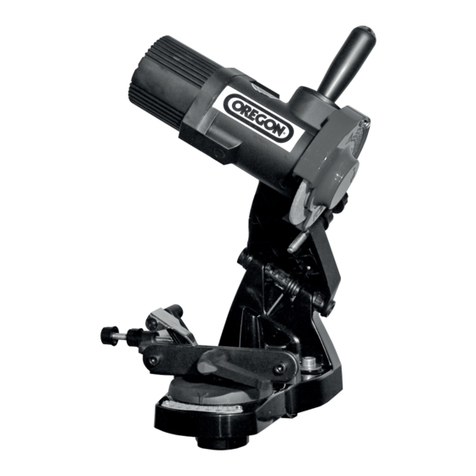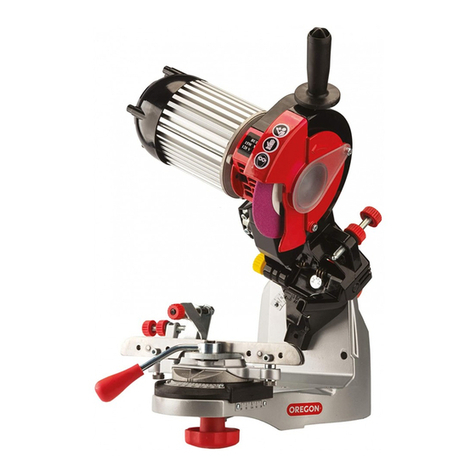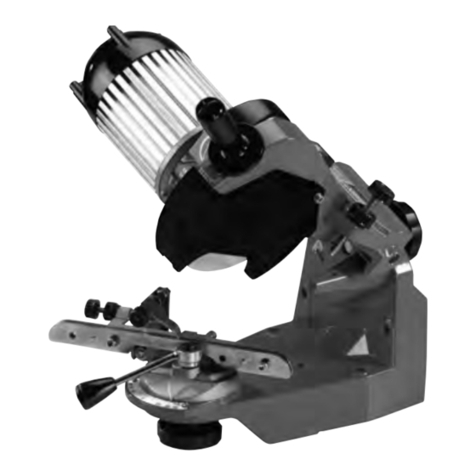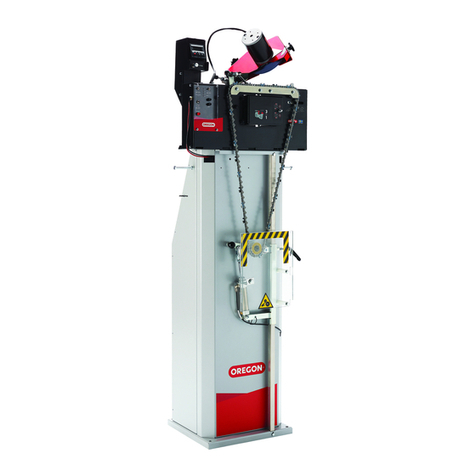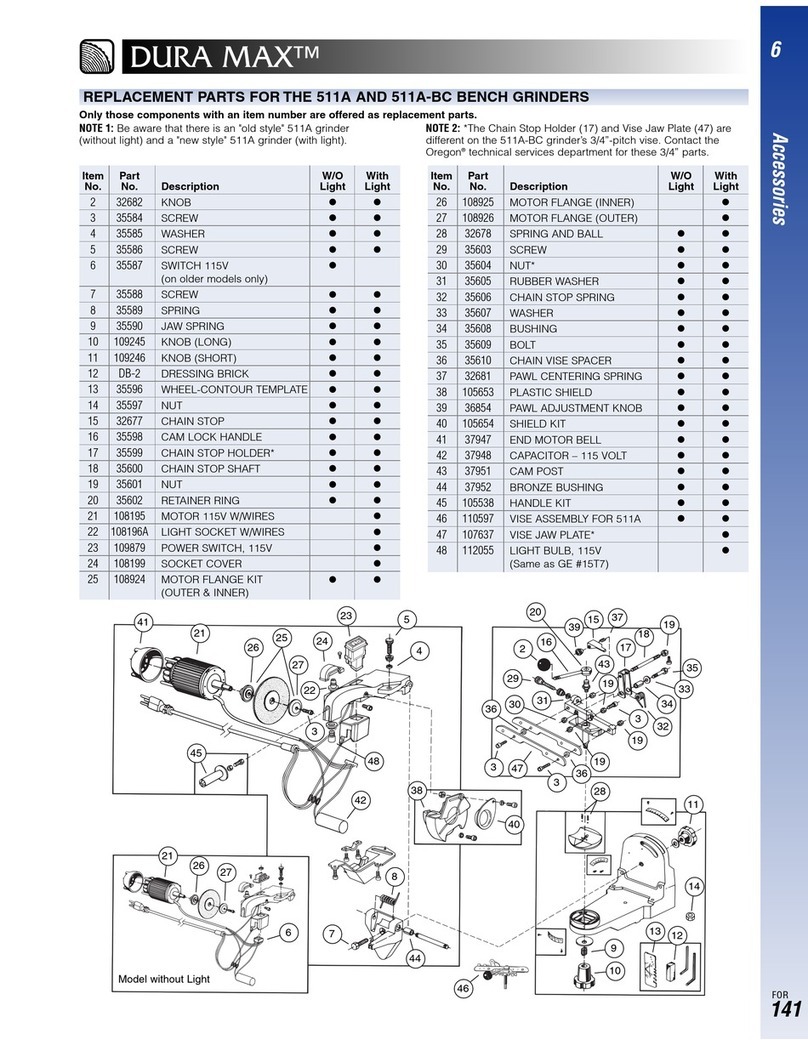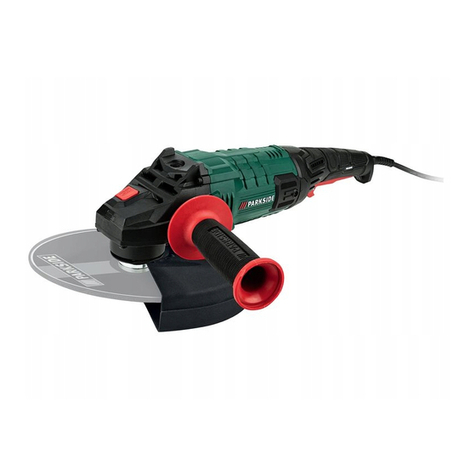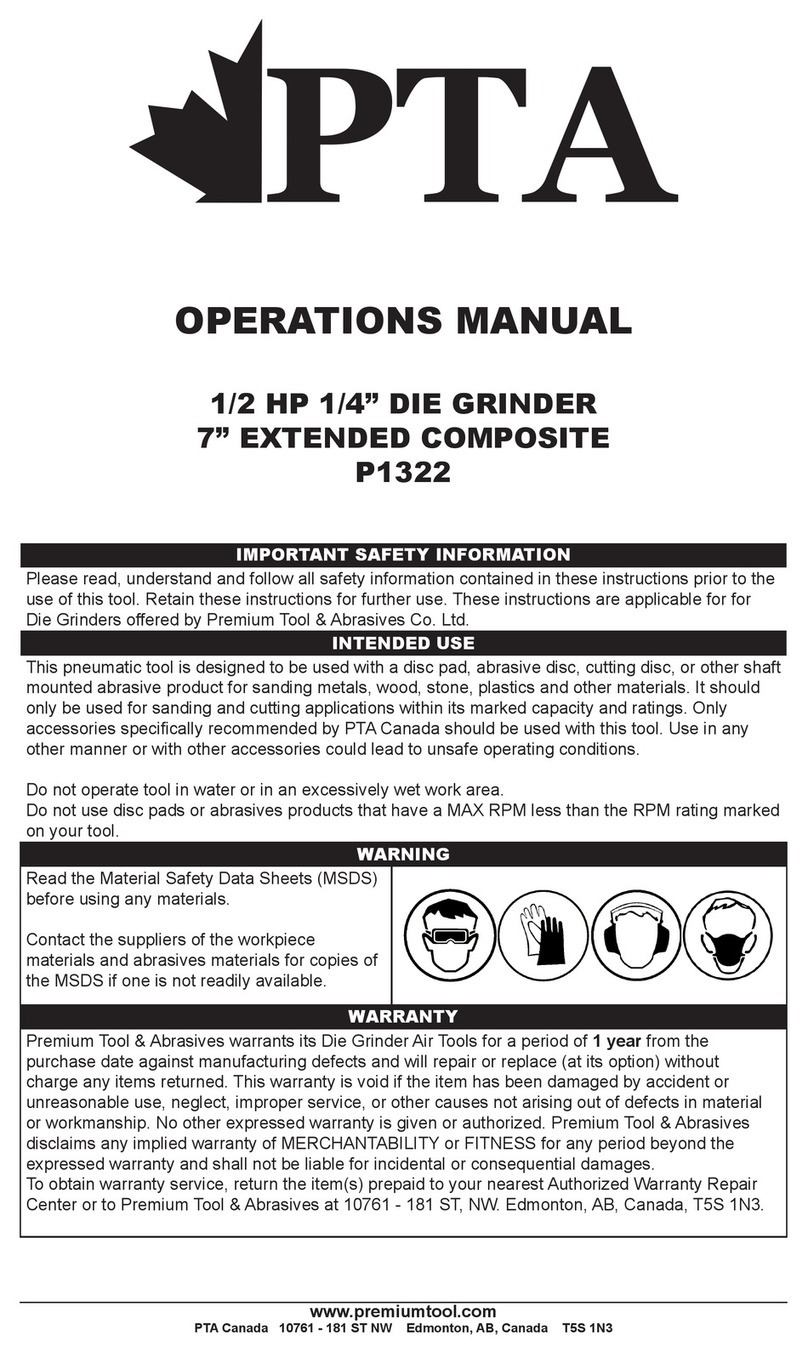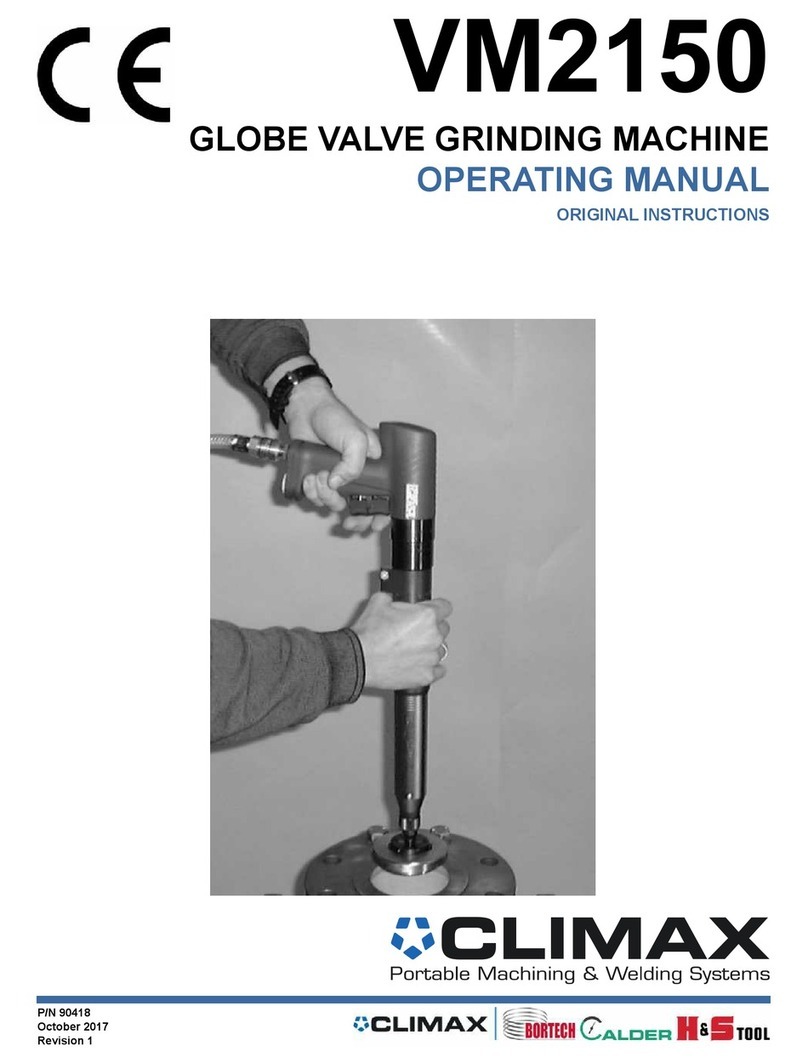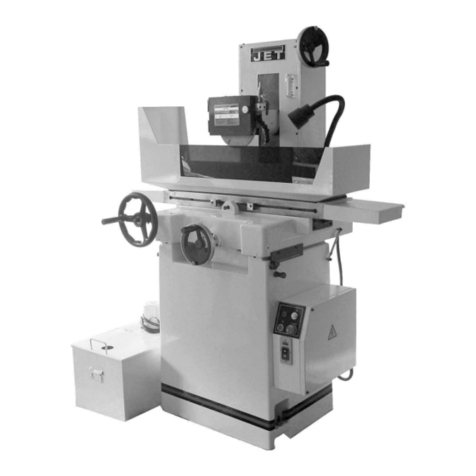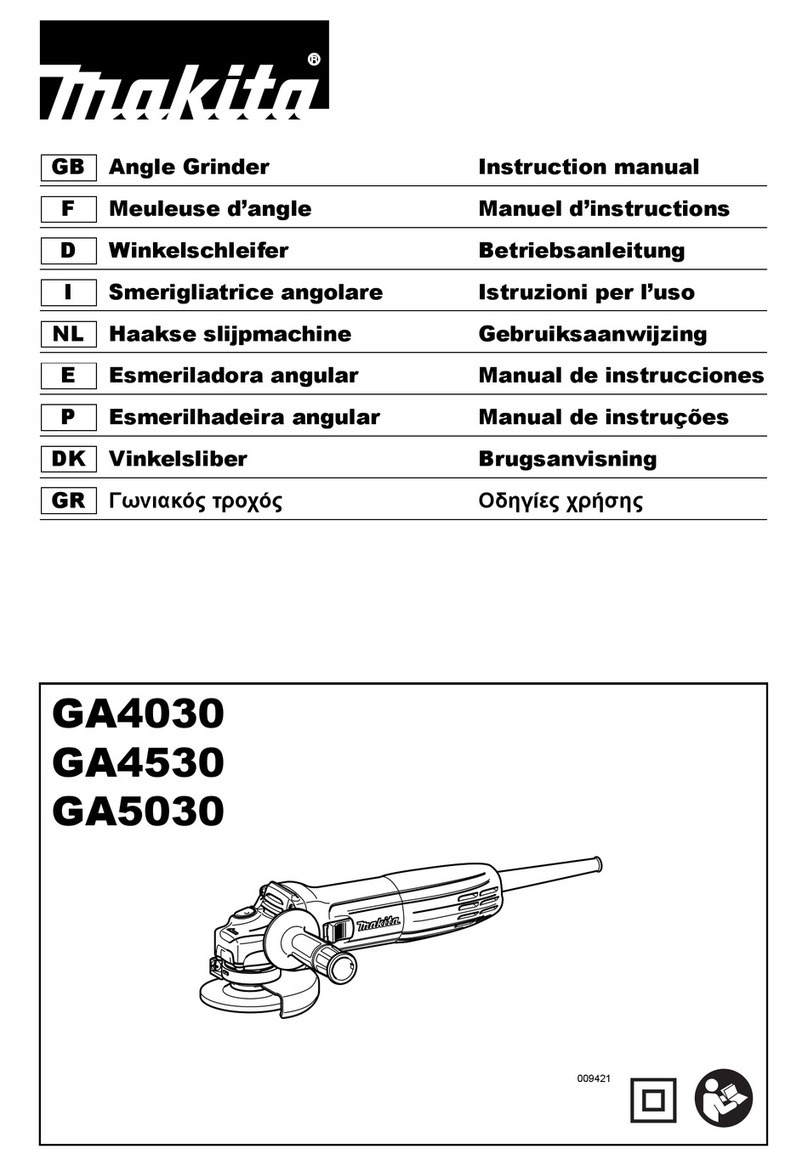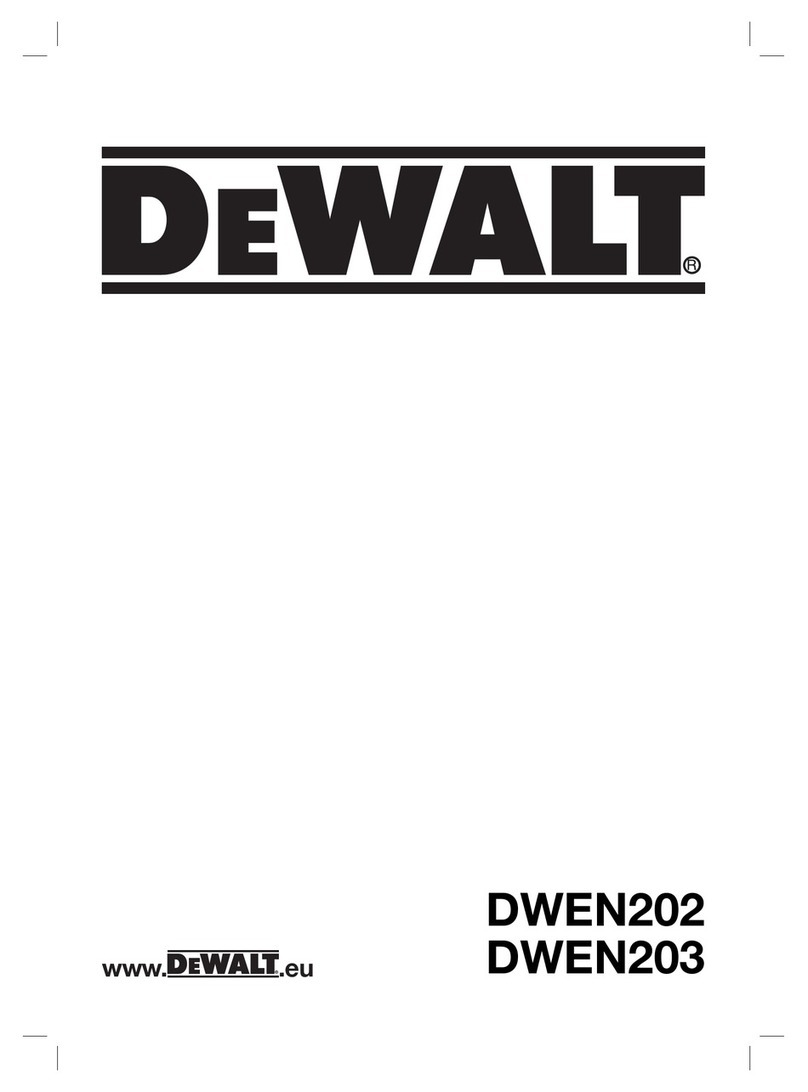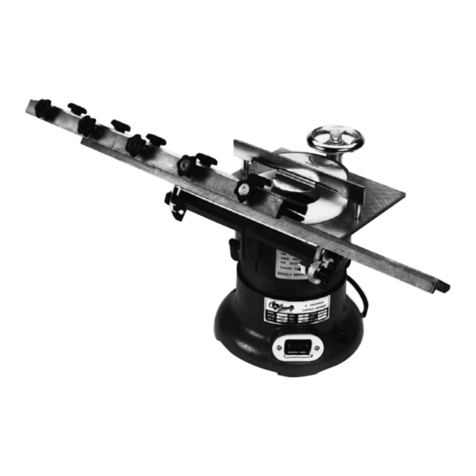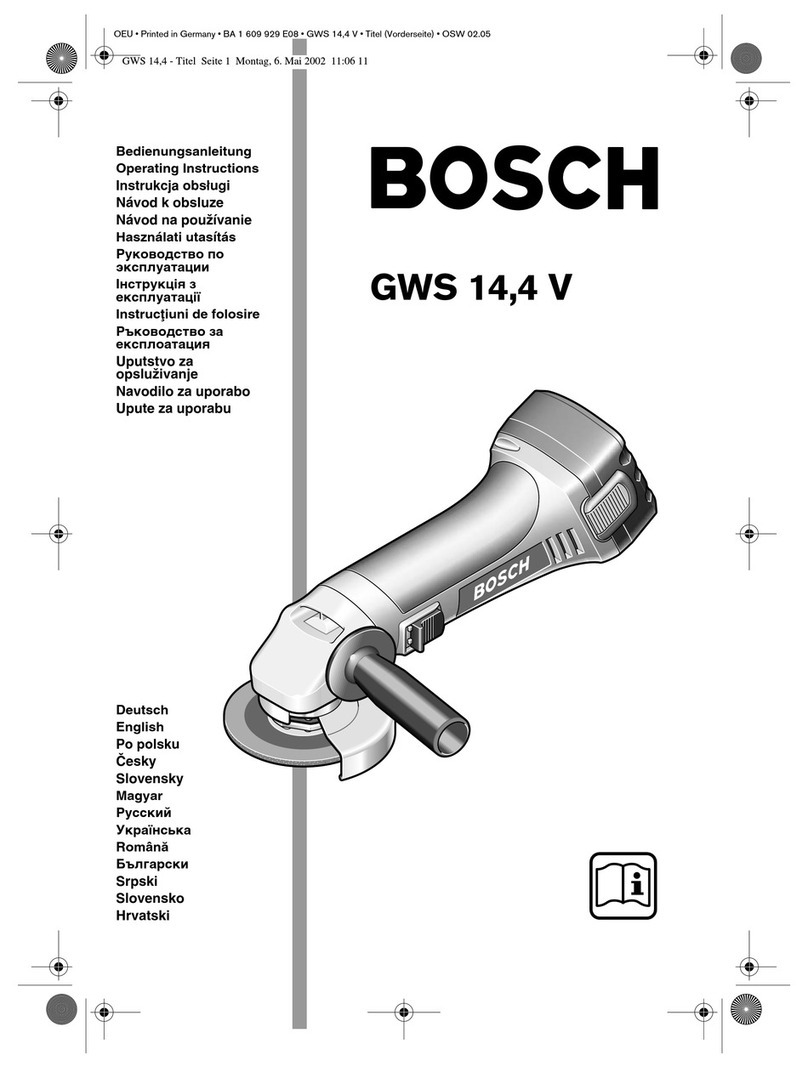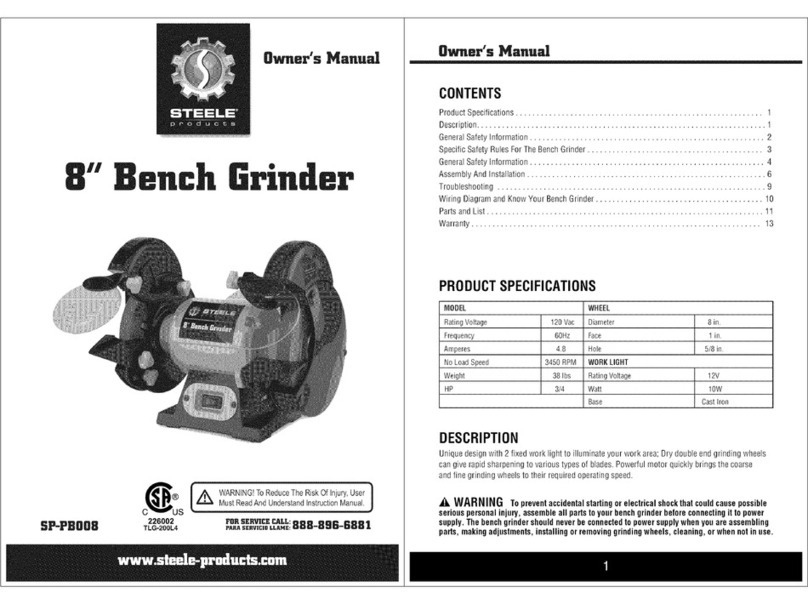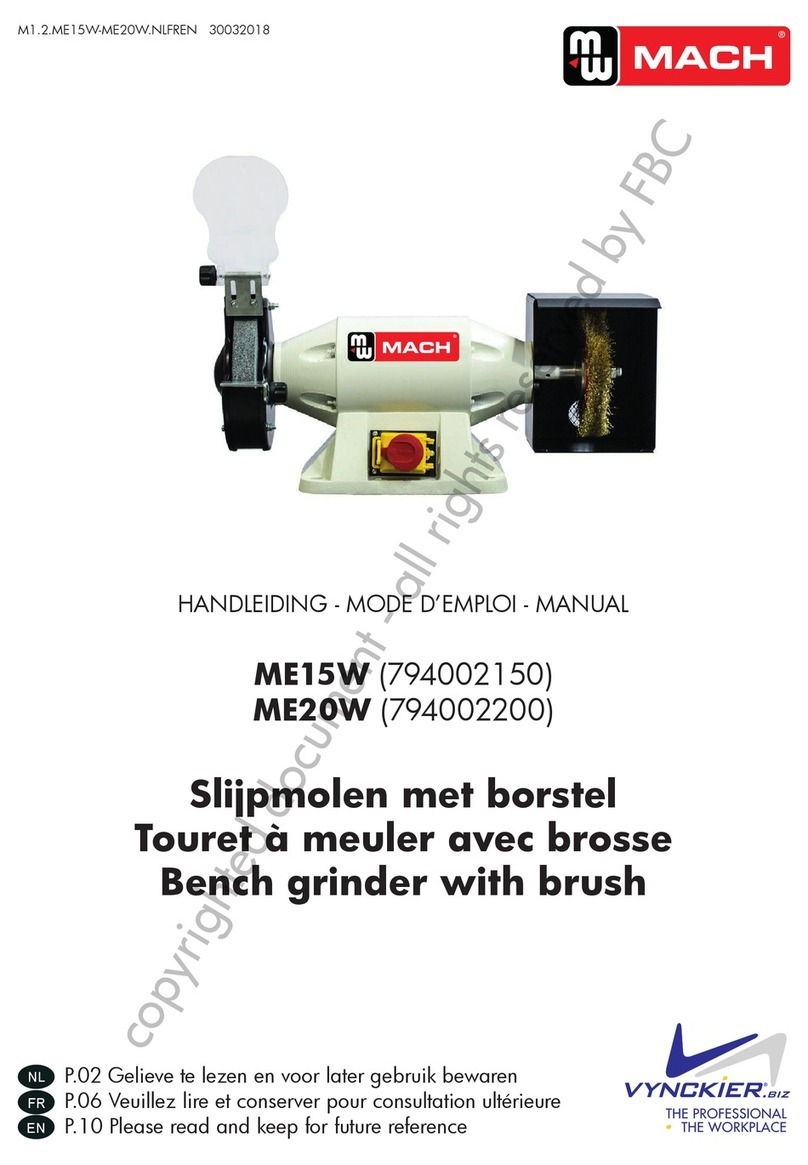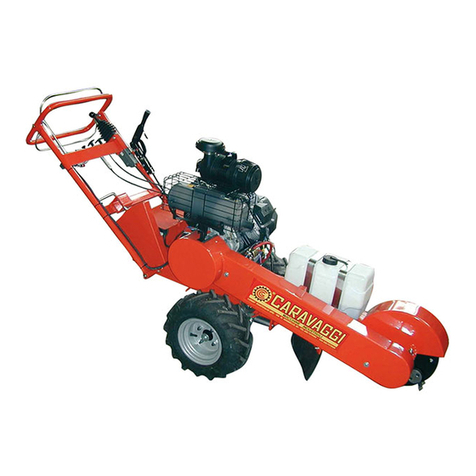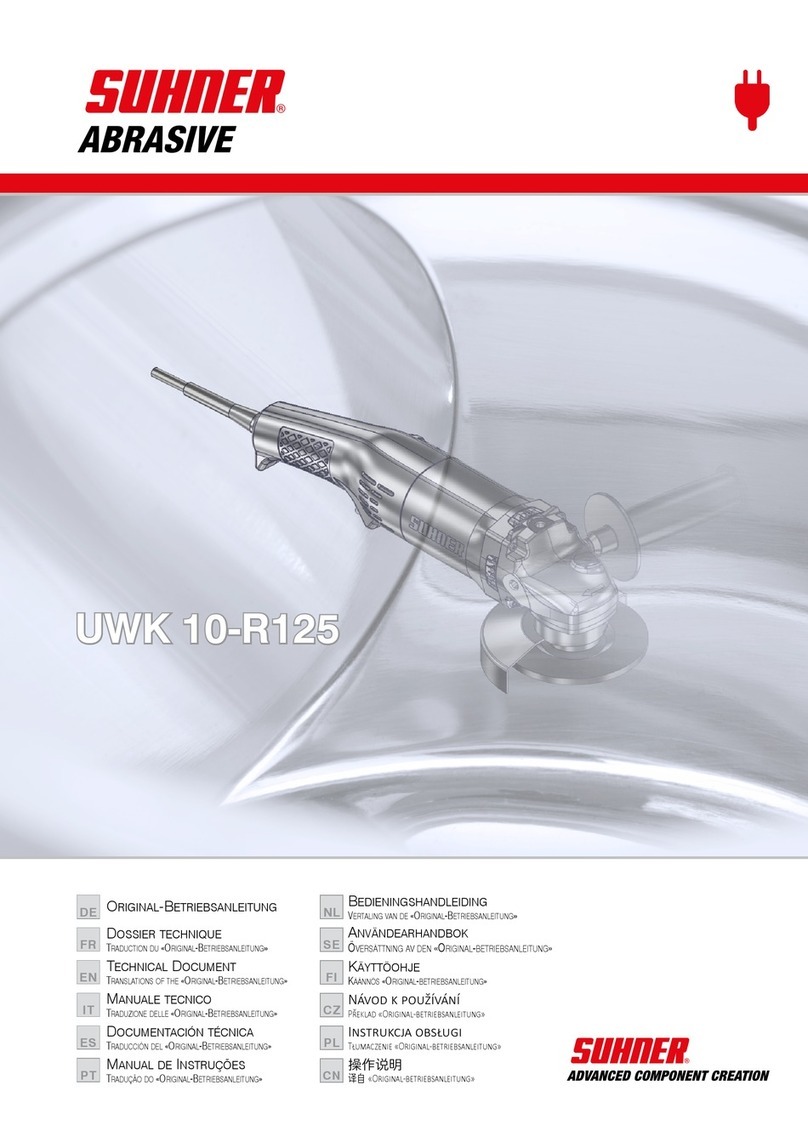
3
or otherwise engage the traveling belt, wheel, or disc
surface with the work piece pointing into the direction
from which the belt, wheel, or disc is traveling. However,
if you choose to do so, be aware the work piece may
lodge in the traveling belt, wheel, or disc and be forcibly
and dangerously ejected.
22. Do not operate this machine if the gap (nip point)
between a moving belt, wheel or disc, and the work
support surface exceeds 1/8 inch.
23. Do not operate this machine if the gap between the
moving abrasive belt, disc or wheel and the adjacent
face of the work rest (or table) will permit passage
of the work piece through the gap (nip point). Note,
however, that certain alloys such as titanium may create
conditions where grinding debris can accumulate in a
tight gap creating a potential fire hazard. When in doubt
consult with your safety officer. Failure to observe
this warning may result in the work piece or other item
being caught in this gap, and/or being forcibly ejected.
Failure to heed this warning may cause serious bodily
harm to the operator and/or bystanders.
24. Never position the work rest table at an acute angle
between the top of the work rest table and the moving
belt or wheel. Doing so will create “nip point” that can
cause serious injury should an operator body part
become entangled (pulled into) the nip point created by
this acute angle.
25. Do not operate the equipment or allow others to operate
the equipment without proper training in these and
other rotating machinery safety requirements.
26. Disconnect the power source when
the grinder is not in use.
27. Do not perform maintenance on the equipment unless
you are fully qualified to do so and understand all
necessary safety and operating requirements.
28. Do not leave the machine unattended while it is running.
29. Correct equipment or safety problems immediately.
Do not operate the equipment when it requires
maintenance or correction.
30. Install and use high quality abrasive belts, wheels,
discs, media, etc., as appropriate to your machine.
31. Understand and follow the operating requirements
provided by the manufacturer of these materials.
Rotational Speed Warning,
Contact Wheels
Scope: Contact wheels manufactured by Oregon®, which
have rubber or urethane tires. Examples include but are
not limited to stock codes 702, 702-S-90, 707, 707EX and
variants. Variants have stock codes that begin with the base
number; i.e. 802-S-55 is an 802 variant.
Users are warned not to exceed the below listed revolutions
per minute (RPM) on the subject wheels. Failure to heed
this warning may lead to tire de-bonding, fragmentation, or
other mechanical failure. Such failures may cause serious
personal injury to operators or bystanders, and/or cause
property damage.
Stock Code Maximum Rpm
707-S-90 4,400
Occupational Noise Exposure
Oregon products produce levels of noise consistent with
their intended purposes. The level and spectral content of
noise produced is dependent on the product type, the degree
that the product is maintained in proper operating condition,
the abrasive/media and accessories used, the specific
application, and the surrounding environment.
Noise levels produced by various Oregon grinders, as
measured at the factory, range from 80 to 93 decibels.
Product operators and persons in the immediate product
vicinity should be protected from excessive noise dose
levels as prescribed in OSHA regulation 29CFR Part 1910.95
titled “Occupational Noise Exposure”.
WARNING: Rotating equipment can be
dangerous to operators and those who may
be in its immediate operating vicinity. It is the
absolute and direct responsibility of purchasers, managers,
and operators of this equipment to understand and obey the
foregoing minimum operating safety requirements.
Oregon disclaims any and all responsibility for injuries,
damage, loss of income, or other adverse consequence as
might be incurred by purchasers, managers, and operators
of this equipment.
If you have questions or safety concerns regarding
operating the subject equipment please call your authorized
Oregon distributor, or Oregon Outdoor Equipment Parts,
Oregon®, Blount, Inc., 4909 SE International Way,
Portland, Oregon 97222, 800-223-5168, or you can contact
us by email at technicalservices@OregonProducts.com
Safety Requirements
564916ab_760_Belt_Grinder_Manual.indd 3564916ab_760_Belt_Grinder_Manual.indd 3 5/7/20 11:32 AM5/7/20 11:32 AM


